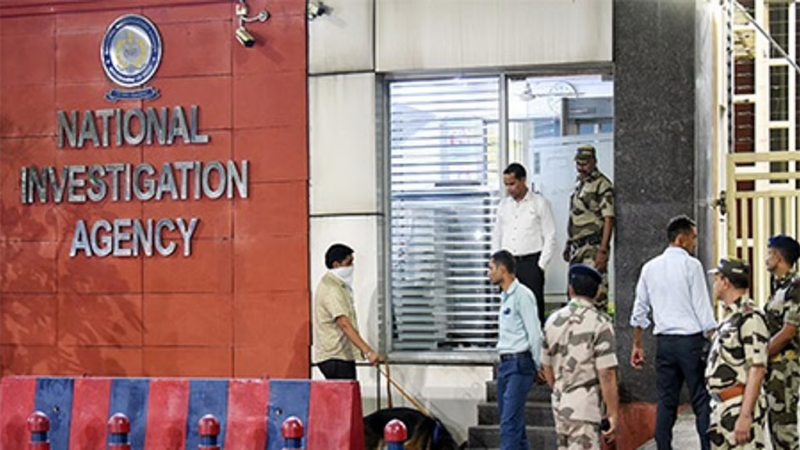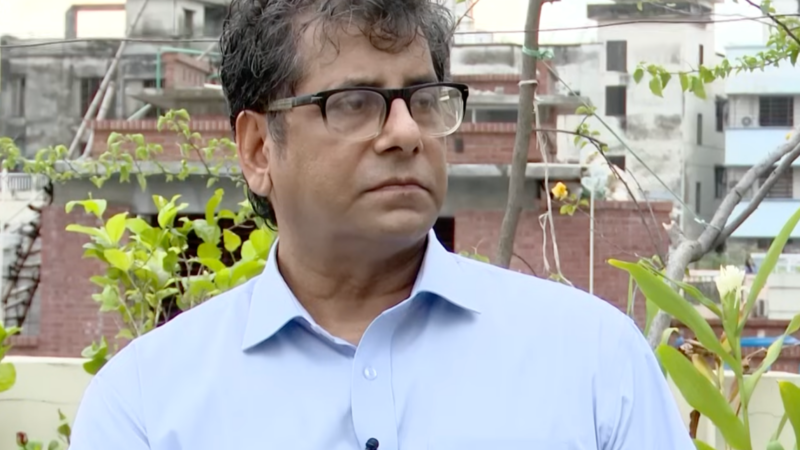Streatham attacker associated with terrorists including Manchester Arena bomber’s brother in prison

An Isis supporter who launched a knife rampage in London 10 days after being released from prison had associated with high-profile terrorists inside jail, an inquest has heard.
Sudesh Amman, 20, stabbed two people who survived on the London district’s high street before being shot dead by police on 2 February 2020.
The inquest into his death heard that he had been held in HMP Belmarsh since May 2018, after being arrested and jailed for previous terror offences.
Intelligence reports from the high-security prison showed that he was associating with “high-profile prisoners”, including the Manchester Arena bomber’s brother, Hashem Abedi.
While inside jail, Amman told his mother that HMP Belmarsh was a “blessing”.
“This place is a blessing,” he added. “I used to ask Allah to give me good brothers and companions…he answered my prayers and put me here.”
Amman had originally been arrested for planning a terror attack in May 2018, but was charged with the lesser offences of possessing and disseminating terrorist publications.
The inquest heard that while inside HMP Belmarsh, he vocally expressed his jihadist beliefs and told fellow inmates he wanted to commit a terror attack or join Isis.
A month before his release, a handwritten pledge of allegiance to the leader of Isis was found in his cell, and official assessments found that Amman was a high risk to the public and may encourage others to commit terror attacks.
The inquest heard that a senior Metropolitan Police officer expressed concerns about Amman’s release to prison officials and asked if his sentence could be extended for a disciplinary matter, but was told it could not.
A copy of the letter, which was shown to the inquest, cited intelligence that Amman had been heard shouting in Arabic that “everyone will come under the black flag [of Isis]”.
✕ Sadiq Khan warns Streatham attack was ‘preventable’
It said he had “openly expressed a strong loathing towards non-Muslims” and his own desires to commit terror attacks, go to the afterlife, kill the Queen, become a suicide bomber and join Isis. Amman also spoke approvingly of the murder of Fusilier Lee Rigby.
The Metropolitan Police raised concerns about his association with high profile terrorists, who also included the Buckingham Palace sword attacker Mohiussunath Chowdhury.
Chowdhury planned a second attack after being released from HMP Belmarsh in December 2018, and spoke to undercover police of a “young, trusted brother” he met in prison and dreamed about committing a terror attack in London alongside, the jury was told.
Jenny Louis, the governor of Belmarsh, said she did not know whether police had informed the prison of Chowdhury’s claims or if there had been any investigation into if the “brother” was Amman.
“We did a lot of disruption movements [between different parts of the prison],” Ms Louis told the inquest.”Because of comments he made, engagements with others, this was somebody who was trying to engage with others in a really unacceptable way in custody.”
Prison intelligence also showed that Amman had been attempting to convert other prisoners to Islam and was made to sign a “compact” pledging to stop the behaviour.
The agreement said he would also stop publicly discussing Isis, but he violated the requirements.
Mohiussunnath Chowdhury was among the terrorist prisoners Sudesh Amman associated with (PA)
A psychological report conducted during Amman’s imprisonment concluded that he may have the intent and capability of launching a terrorist knife attack when freed.
He was released automatically on 23 January 2020, placed in a probation service hostel in Streatham and subjected to a curfew, electronic tag and several licence conditions.
Amman immediately became the subject of a “priority investigation” by MI5 and the Metropolitan Police, the inquest heard.
He was also being managed by the probation service, an overt police unit and had meetings with ideological and practical mentors.
Officials had planned for his release for months as part of multi-agency public protection processes, which were also used for the Fishmongers’ Hall attacker Usman Khan.
Amman was being followed by four undercover armed police officers on foot when he launched the attack, while others were in vehicles on surrounding roads.
The inquest heard how he stole a knife from a shop, which he visited two days before without buying anything, and ran outside while being chased by armed police.
Within seconds, Amman stabbed a woman in the back outside a pub and shortly afterwards, struck a man in his torso. Both victims survived.
Amman ran on until stopping outside a Boots chemist and turning to officers while holding the knife, at which point he was shot twice by police.
He was pronounced dead at the scene, following an attack that lasted 62 seconds in total.
Like other terror attacks that happened previously at HMP Whitemoor and Fishmongers’ Hall, he was wearing a homemade fake suicide belt. The inquest continues.






